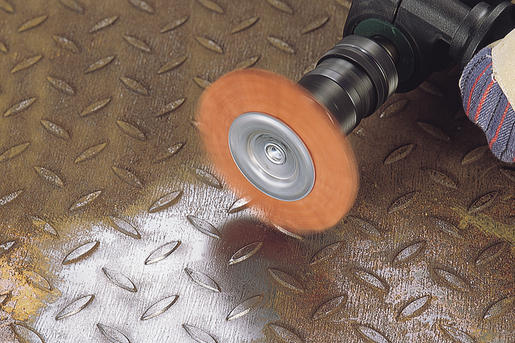Crimped wire wheel brushes are versatile tools used in various industries, from metalworking to woodworking, for tasks such as cleaning, deburring, and surface preparation. Selecting the right crimped wire wheel brush for your specific application is crucial to achieving optimal results and ensuring safety. This comprehensive guide will walk you through the key factors to consider when choosing a crimped wire wheel brush.
What are Crimped Wire Wheel Brushes?
Crimped wire wheel brushes are composed of metal wires that are crimped or twisted together, forming a robust and abrasive tool. The crimped configuration of the wires provides flexibility, allowing the brush to conform to irregular surfaces and contours. These brushes are commonly mounted on bench grinders, angle grinders, or other power tools, making them efficient for various tasks.
Factors to Consider
- Wire Material:
The material of the wire used in the brush is a critical factor in determining its effectiveness for specific applications. Common materials include carbon steel, stainless steel, and brass. Carbon steel brushes are suitable for heavy-duty tasks like rust removal, while stainless steel brushes are corrosion-resistant and ideal for applications where contamination is a concern. Brass brushes are softer and are often used for more delicate surfaces.
- Wire Gauge:
The wire gauge refers to the thickness of the wires used in the brush. Thicker wires are generally more durable and suitable for heavy-duty tasks, while thinner wires provide more flexibility and are suitable for lighter applications. Consider the nature of your project and the material you’re working with when selecting the appropriate wire gauge.
- Wire Density:
The density of the wires on the brush affects its aggressiveness and coverage area. Brushes with higher wire density are more aggressive and suitable for tasks that require more material removal. Lower wire density brushes are ideal for finer finishes and applications where precision is crucial.
- Brush Diameter:
The diameter of the crimped wire wheel brush determines the coverage area and the efficiency of the tool. Larger brushes cover more surface area but may be less precise, while smaller brushes provide more control and are suitable for detailed work. Consider the size of the workpiece and the intricacy of the task when choosing the brush diameter.
- Arbor Size:
The arbor size of the brush must match the arbor size of the power tool it will be mounted on. Ensure compatibility to avoid any issues during installation and use. Common arbor sizes include 1/2 inch, 5/8 inch, and 3/4 inch.
- Rotation Speed:
Crimped wire wheel brushes are designed to operate within specific RPM (revolutions per minute) ranges. Exceeding the recommended RPM can lead to premature wear of the brush or even pose safety hazards. Check the manufacturer’s guidelines and the specifications of your power tool to ensure proper compatibility.
- Safety Considerations:
Always prioritize safety when selecting a crimped wire wheel brush. Choose brushes with safety features such as reinforced construction and proper balance. Additionally, wear appropriate personal protective equipment, including safety glasses and gloves, to prevent injury during use.
- Application Specifics:
Consider the specific tasks you will be performing with the crimped wire wheel brush. Different applications may require brushes with unique characteristics, such as aggressive brushing for heavy material removal or fine brushing for surface finishing. Select a brush that aligns with the demands of your project.
Conclusion
Choosing the right crimped wire wheel brush is a crucial step in ensuring the success of your metalworking or woodworking project. By considering factors such as wire material, gauge, density, diameter, arbor size, rotation speed, safety features, and application specifics, you can make an informed decision that meets your requirements. Take the time to understand the unique properties of each brush and how they align with your specific needs. With the right crimped wire wheel brush, you can enhance efficiency, achieve better results, and extend the lifespan of your tools.


